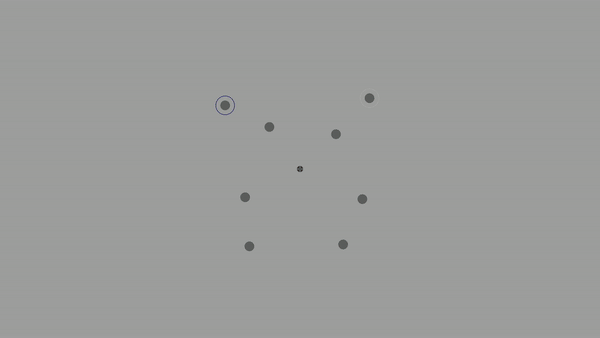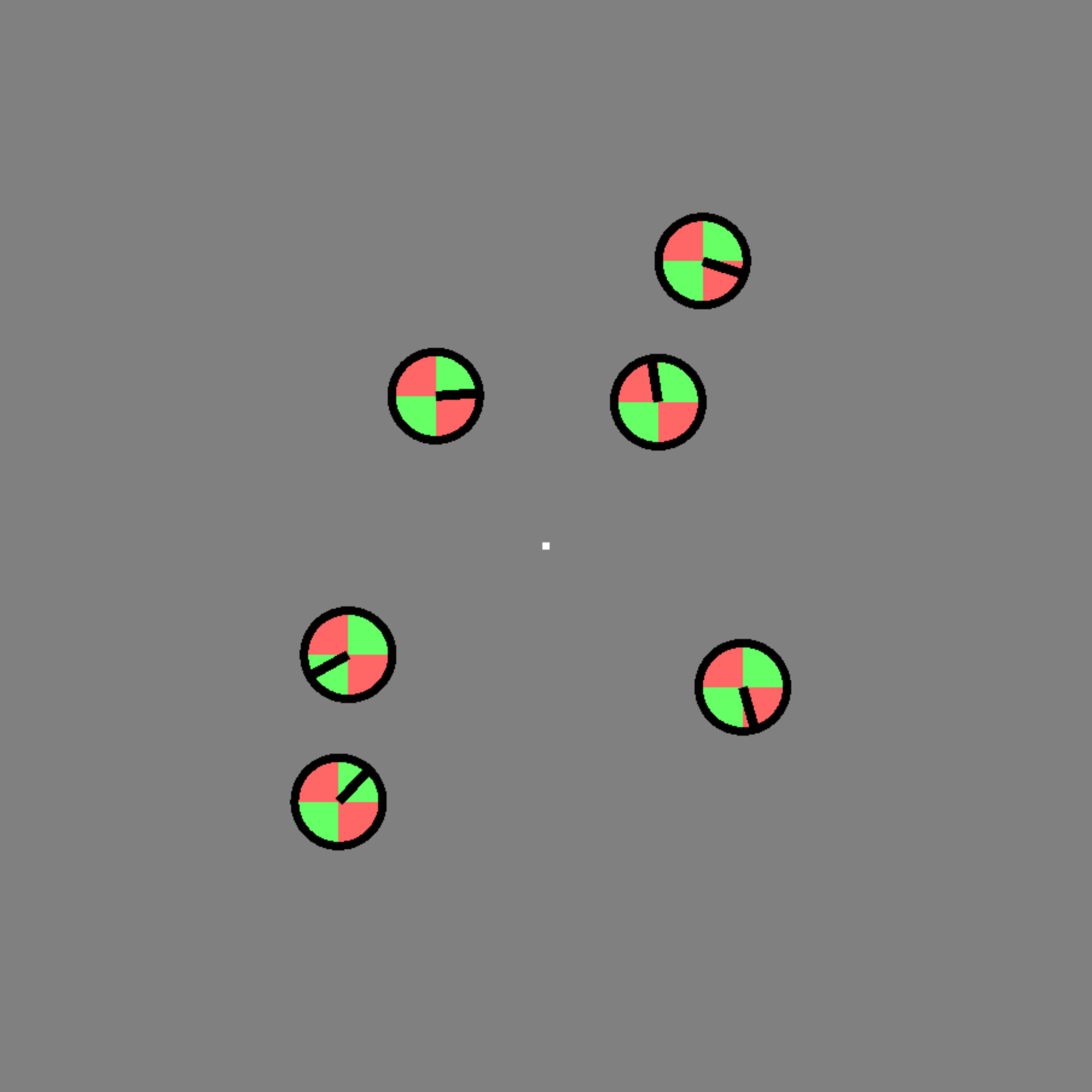
Research Interests
Memory and attention Sensory Processes, Perception and Performance Cognition Machine learning Brain Cognitive neuroscience Computational neuroscience (incl. mathematical neuroscience and theoretical neuroscience) Experimental Psychology General Psychology & Cognitive Sciences Psychology and Cognitive Sciences Vision ScienceDr William Ngiam
Lecturer
School of Psychology
College of Education, Behavioural and Social Science
Eligible to supervise Masters and PhD (as Co-Supervisor) - email supervisor to discuss availability.
Attention – the selection of relevant information – and working memory – the maintenance of that information in mind – are at the core of how we perceive and how we think. I started studying attention and cognition because I hope that if we can all pay a little more attention and think a little clearer, we can collectively work to take on the important societal problems that face all of us today.
I am a cognitive neuroscientist trying to understand how information is represented in the mind and brain, and the mechanisms that underpin attention and working memory. I run the Perception, Attention, Learning, and Memory Lab or PALM Lab. We run psychophysical experiments that test the limits of visual perception and recall, build mathematical models of the processes to explain cognitive performance, and train machine learning models on neuroimaging data to decode the brain patterns underlying attention and memory.
I believe psychological research should be conducted transparently and rigorously through open scholarship. I am involved in many efforts to promote Open Science. I am serving as the inaugural Open Practices Editor at Attention, Perception, and Psychophysics, where I review the shared materials in reviewed manuscripts. I served on the steering committee of ReproducibiliTea, a global journal club network that empowers early-career researchers to pursue reproducible research practices. I have also made small contributions to initiatives such as the Framework for Open and Reproducible Research Training (FORRT) and the repliCATS project, and was recognised for my efforts as a Rigor Champion by the National Institutes of Health NINDS.

We can attend to only a few items at a time, so how and what we keep in mind is very important. In the current digital age, information is readily available at our fingertips, with algorithms designed to keep us glued to our devices and consume endless streams of content. This has lead to the collective feeling that our ability to focus our attention and our ability to discern information from misinformation is getting worse. My research hopes to improve understanding of our attention and cognitive systems, so that the world can regain focus on what is needed to meet the important challenges of today.
The Perception, Attention, Learning, and Memory (PALM) Lab studies our visual attention and working memory systems by linking patterns of brain activity to patterns of cognitive behaviour. We conduct experiments with psychophysics and neuroimaging (typically electroencephalography) methods, and use a combination of computational modeling and machine learning to decipher how humans select and keep information in mind for ongoing perception and cognition.
Research Projects

How are features bound together and stored in visual working memory?
The visual working memory system rapidly pieces together different visual features, such as color and shape, into perceived objects. At the same time, our visual working memory system can focus our attention on relevant items, filtering out irrelevant items and sometimes even irrelevant features! Our research aims to understand how various perceptual factors and cognitive factors influences working memory representations. In particular, how does featural information become bound into objects and stored in working memory, and whether this sets a sharp limit on how much we can hold in mind.

How does experience and learning change how we attend to and store information in working memory?
There is a growing appreciation that our previous learning and experience can shape how we encode and represent information in mind. Our long-term memory system can readily shape how we attend to incoming visual information, at surprisingly early stages of visual processing. In particular, we are interested in how different types of learning (e.g. recognition training, statistical learning, associative learning) may improve the efficiency of the visual working memory system, whether this is achieved by changing working memory itself or circumventing its sharp capacity limit through other means.

Decoding the contents of visual working memory using neuroimaging and multivariate classification
A recently developed decoder that applies machine learning classification to neuroimaging (EEG) data (called ‘mvLoad’) has located a multivariate neural signal that tracks working memory load (i.e. how many items are being stored in visual memory). This gives us an unprecedented window into the processes that underlie visual working memory in conjunction with how the brain actively maintains information. We measure electroencephalography (EEG) while subjects complete attention and working memory tasks that are designed to tap into theorized underlying processes. Then, we apply ‘mvLoad’ to see whether we can classify and map the changed contents of working memory.
| Date | Position | Institution name |
|---|---|---|
| 2024 - ongoing | Lecturer | University of Adelaide |
| 2019 - 2024 | Postdoctoral Researcher | University of Chicago |
| Date | Institution name | Country | Title |
|---|---|---|---|
| 2015 - 2019 | University of Sydney | Australia | Doctor of Philosophy |
| 2011 - 2014 | University of Sydney | Australia | Bachelor of Psychology (Honours) |
| Year | Citation |
|---|---|
| 2025 | Styrkowiec, P. P., Ngiam, W. X. Q., Epstein, W., Gneezy, R., Jones, H. M., Awh, E., & Vogel, E. K. (2025). Item-based Parsing of Dynamic Scenes in a Combined Attentional Tracking and Working Memory Task.. Journal of cognitive neuroscience, 1-17. Europe PMC1 |
| 2024 | Ngiam, W. X. Q. (2024). Mapping visual working memory models to a theoretical framework. Psychonomic Bulletin and Review, 31(2), 442-459. Scopus15 WoS16 Europe PMC14 |
| 2024 | Brumback, A. C., Ngiam, W. X. Q., Lapato, D. M., Allison, D. B., Daniels, C. L., Dougherty, M., . . . Ye, H. (2024). Catalyzing communities of research rigour champions. Brain Communications, 6(3), fcae120-1-fcae120-10. WoS1 |
| 2024 | Silverstein, P., Elman, C., Montoya, A., McGillivray, B., Pennington, C. R., Harrison, C. H., . . . Syed, M. (2024). A guide for social science journal editors on easing into open science. RESEARCH INTEGRITY AND PEER REVIEW, 9(1), 14 pages. WoS12 Europe PMC6 |
| 2024 | Jones, H. M., Diaz, G. K., Ngiam, W. X. Q., & Awh, E. (2024). Electroencephalogram Decoding Reveals Distinct Processes for Directing Spatial Attention and Encoding Into Working Memory.. Psychological science, 35(10), 9567976241263002. Scopus12 WoS10 Europe PMC7 |
| 2024 | Ngiam, W., Geng, J. J., & Shomstein, S. (2024). Editorial for Attention, Perception, & Psychophysics. Attention, Perception and Psychophysics, 86(8), 2565-2568. |
| 2023 | Ngiam, W. X. Q., Loetscher, K. B., & Awh, E. (2023). Object-Based Encoding Constrains Storage in Visual Working Memory. Journal of Experimental Psychology: General, 153(1), 86-101. Scopus8 WoS9 Europe PMC7 |
| 2023 | Ngiam, W. X. Q., Foster, J. J., Adam, K. C. S., & Awh, E. (2023). Distinguishing guesses from fuzzy memories: Further evidence for item limits in visual working memory. Attention, Perception, and Psychophysics, 85(5), 1695-1709. Scopus10 WoS10 Europe PMC11 |
| 2022 | Parsons, S., Azevedo, F., Elsherif, M. M., Guay, S., Shahim, O. N., Govaart, G. H., . . . Terry, J. (2022). A community-sourced glossary of open scholarship terms. Nature Human Behaviour, 6(3), 312-318. Scopus79 WoS73 Europe PMC35 |
| 2021 | Ngiam, W. X. Q., Adam, K. C. S., Quirk, C., Vogel, E. K., & Awh, E. (2021). Estimating the statistical power to detect set-size effects in contralateral delay activity. Psychophysiology, 58(5), e13791. Scopus16 WoS14 Europe PMC15 |
| 2019 | Ngiam, W. X. Q., Brissenden, J. A., & Awh, E. (2019). "Memory compression" effects in visual working memory are contingent on explicit long-term memory. Journal of Experimental Psychology: General, 148(8), 1373-1385. Scopus28 WoS27 Europe PMC19 |
| 2019 | Ngiam, W. X. Q., Khaw, K. L. C., Holcombe, A. O., & Goodbourn, P. T. (2019). Visual Working Memory for Letters Varies With Familiarity but Not Complexity. Journal of Experimental Psychology: Learning Memory and Cognition, 45(10), 1761-1775. Scopus40 WoS36 Europe PMC23 |
| 2018 | Bateman, J. E., Ngiam, W. X. Q., & Birney, D. P. (2018). Relational encoding of objects in working memory: Changes detection performance is better for violations in group relations. Plos One, 13(9), 12 pages. Scopus4 WoS4 Europe PMC4 |
| Year | Citation |
|---|---|
| 2025 | Styrkowiec, P., Ngiam, W. X. Q., Epstein, W., Gneezy, R., Jones, H. M., Awh, E., & Vogel, E. (2025). Item-based parsing of dynamic scenes in a combined attentional tracking and working memory task. DOI |
| 2025 | Ngiam, W. X. Q., & Lee, M. D. (2025). Similarity judgments and visual working memory do not share the same cognitive representation. DOI |
| 2023 | Ngiam, W. X. Q., Loetscher, K., & Awh, E. (2023). Object-based encoding constrains storage in visual working memory. DOI Europe PMC1 |
| 2023 | Ngiam, W. X. Q. (2023). Mapping visual working memory models to a theoretical framework. DOI |
| 2022 | Ngiam, W. X. Q., Foster, J. J., Adam, K. C. S., & Awh, E. (2022). Distinguishing guesses from fuzzy memories: Further evidence for item limits in visual working memory. DOI |
| 2022 | Goodbourn, P., Livesey, E. J., Ngiam, W. X. Q., Holcombe, A., & Forte, J. (2022). Learning and retention of new symbolic representations of number. DOI |
| 2022 | Govaart, G. H., Schettino, A., Helbling, S., Mehler, D. M. A., Ngiam, W. X. Q., Moreau, D., . . . Paul, M. (2022). EEG and ERP Methods - Preregistration Template. DOI |
| 2020 | Ngiam, W. X. Q., Adam, K. C. S., Quirk, C., Vogel, E. K., & Awh, E. (2020). Estimating the statistical power to detect set size effects in contralateral delay activity. DOI |
| 2018 | Ngiam, W. X. Q., Khaw, K. L. C., Holcombe, A. O., & Goodbourn, P. T. (2018). Visual working memory for letters varies with familiarity but not complexity. DOI |
Course Coordinator
2024 (OTP5), 2025 (OTP3) – Applied Quantitative and Qualitative Methods
2025 (OTP2) – Research Project Planning, Managing and Analysing Data
2024 (OTP6) – Understanding Synthesising Psychological Evidence
Lecturer
2024, 2025 – Perception and Cognition (Concepts and Categories)
2025 – Honours Research Methods and Statistics (Statistical Power)
| Date | Role | Research Topic | Program | Degree Type | Student Load | Student Name |
|---|---|---|---|---|---|---|
| 2025 | Co-Supervisor | The project studies how human-like Al features influence perceptions of machine consciousness and human behaviors. It develops experimental tools, a mind perception measure, and publishes methods, datasets, and findings to advance understandings of human-Al interaction. | Doctor of Philosophy | Doctorate | Full Time | Mr Oliver Craig Lack |
| 2025 | Co-Supervisor | Precision Education: Using artificial intelligence to enhance real world learning | Doctor of Philosophy | Doctorate | Part Time | Mr Shaun Mc Carthy |
| 2025 | Co-Supervisor | The project studies how human-like Al features influence perceptions of machine consciousness and human behaviors. It develops experimental tools, a mind perception measure, and publishes methods, datasets, and findings to advance understandings o | Doctor of Philosophy | Doctorate | Full Time | Mr Oliver Craig Lack |
| 2025 | Co-Supervisor | Precision Education: Using artificial intelligence to enhance real world learning | Doctor of Philosophy | Doctorate | Full Time | Mr Shaun Mc Carthy |
| 2024 | Co-Supervisor | Investigating Human-AI Interactions: An Empirical Foundation to Understand and Measure Human Perceptions of Machine Consciousness | - | Master | Full Time | Mr Oliver Craig Lack |
| Date | Role | Editorial Board Name | Institution | Country |
|---|---|---|---|---|
| 2024 - ongoing | Editor | Attention, Perception and Psychophysics | Psychonomic Society | United States |





